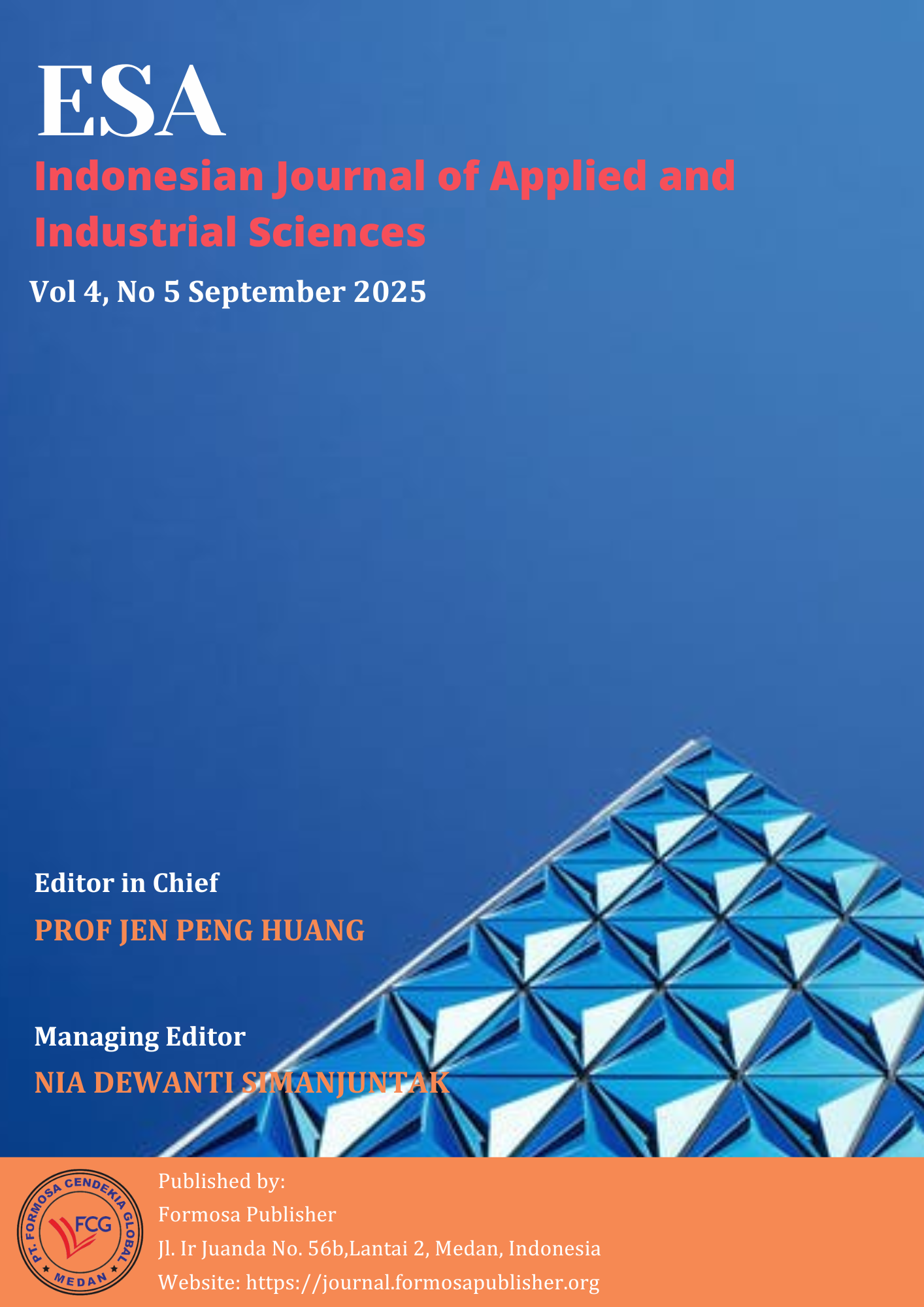Workplace Safety Culture as a KPI in Health-Focused Organizations: A Management Perspective
DOI:
https://doi.org/10.55927/esa.v4i5.133Keywords:
Workplace Safety Culture, Key Performance Indicators, Healthcare Management, Employee Engagement, Safety PerformanceAbstract
This paper provides a discourse on the concept of safety in the workplace as a strategic Key Performance Indicator (KPI) in health-oriented organizations. As compliance is bravely walked on, it discusses safety as an organizational, personnel, and medical strength. The mixed-method approach was utilized on a tertiary hospital, a corporate wellness company, and a private teaching hospital that would engage in the study over the three-year period, 2021-2023, and was divided into semi-structured interviewing, organizational dashboards, and the analysis of documents. The results reflected fewer incidents, better transparency in reporting, and employee involvement because safety culture and KPI models were integrated. As the proposed multi-level KPI reveals, proactive housing protection can be institutionalized in a few different ways, including leadership, training programs, and real-time surveillance, which is beneficial to sustainable healthcare performance.
References
Aromolaran, N. (2025). Effective Leadership Strategies for Implementing Innovative Technologies to Improve Access to Health Facilities (Doctoral dissertation, Walden University).
Beaton, A., Manuel, C., Tapsell, J., Foote, J., Oetzel, J. G., & Hudson, M. (2019). He Pikinga Waiora: supporting Māori health organisations to respond to prediabetes. International Journal for Equity in Health, 18, 1-11.
Birchfield, A. (2024). Thrive at Work: Elevate Your Office Culture and Boost Productivity.
Conza, M. L., Fioretto, S., Masciari, E., & Napolitano, E. V. (2025, March). Enhancing Employee Health Through an Experimental Diet: Insights from Machine Learning Analysis. In 2025, 33rd Euromicro International Conference on Parallel, Distributed, and Network-Based Processing (PDP) (pp. 283-290). IEEE.
Ejaz, U., Frank, M., Emmanuel, J., & Luz, A. (2024). Driving Healthcare Innovation through Strategic Transformation.
El-Said, O. A., Elhoushy, S., Smith, M., & Youssif, M. (2024). Crisis-driven innovation in hospitality: How do international hotel chains innovate to recover from a global crisis?. International Journal of Hospitality Management, 120, 103758.
Elton, J., & O'Riordan, A. (2016). Healthcare disrupted: Next generation business models and strategies. John Wiley & Sons.
Forooraghi, M., Miedema, E., Ryd, N., & Wallbaum, H. (2020). Scoping review of health in office design approaches. Journal of Corporate Real Estate, 22(2), 155-180.
Garton, P. L. (2019). Benefits of a Structured Biopsychosocial Approach to Workplace Rehabilitation for Musculoskeletal Injury (Doctoral dissertation, La Trobe).
Giltenane, M., Sheridan, A., Kroll, T., & Frazer, K. (2022). Work environment challenging Irish public health nurses’ care quality: first postnatal visit. Public Health Nursing, 39(1), 202-213.
Hague, L., Barry, M., Mowbray, P. K., Wilkinson, A., & Avgar, A. (2025). Employee voice in healthcare: a systematic review. Journal of Health Organization and Management, 39(4), 518-530.
Kallo, C. L. (2018). Exploring management trainers' awareness of organisational barriers to improve employee health by identifying workplace stigmas to reduce workplace incidence (Doctoral dissertation, Colorado Technical University).
Karanikas, N., & Tyson, L. (2022). Occupational health and safety (OHS) and integrated management: A desktop-based review across Australia's higher education OHS, business, and general management courses. The Australian Universities' Review, 64(2), 50-60.
Mubareka, S., Amuasi, J., Banerjee, A., Carabin, H., Copper Jack, J., Jardine, C., ... & Jane Parmley, E. (2023). Strengthening a One Health approach to emerging zoonoses. Facets, 8(1), 1-64.
Ni, H. (2024). Health Conditions and Presenteeism Motives in Full-time and Part-time Audiologists.
Peters, A. W., Pyda, J., Menon, G., Suzuki, E., & Meara, J. G. (2019). The World Bank Group: innovative health financing and global surgery opportunities. Surgery, 165(2), 263-272.
Ringvold, K., Saebi, T., & Foss, N. (2023). Developing sustainable business models: A microfoundational perspective. Organization & Environment, 36(2), 315-348.
Shellard, I. J., Martin, N., Mulligan, S., & Hatton, P. (2022). Consensus on environmentally sustainable oral healthcare: a joint stakeholder statement (p. 70). White Rose University Press.
Silbaugh, B. C. (2024). Quality Control for Behavior Analysts: How to Manage Behavioral Intervention Quality in Autism Service Settings. Routledge.
Sirignano, C. (2025). Sustainability 4.0: Evaluating the holistic impact of Industry 4.0 Technologies on ESG Pillars from a Corporate Perspective (Doctoral dissertation, Politecnico di Torino).
Song, J., Hobensack, M., Sequeira, L., Shin, H. D., Davies, S., Peltonen, L. M., ... & Topaz, M. (2024). Social Determinants of Health in Digital Health Policies: an International Environmental Scan. Yearbook of medical informatics, 33(01), 283-291.
Tariq, M. U. (2025). Navigating the Intersection of Diversity and Innovation: Transformative Leadership in Global Workplaces. In Innovative Approaches to Managing Conflict and Change in Diverse Work Environments (pp. 21-48). IGI Global Scientific Publishing.
World Health Organization. (2023). Working together for equity and healthier populations: sustainable multisectoral collaboration based on health in all policies approaches. World Health Organization.
World Health Organization. (2024). Compendium report on multisectoral actions for preventing and controlling noncommunicable diseases and mental health conditions: country case studies. World Health Organization.
World Health Organization. (2024). Compendium report on multisectoral actions for preventing and controlling noncommunicable diseases and mental health conditions: country case studies. World Health Organization.
World Health Organization. (2024). Partnerships and participation for urban health: policy brief. World Health Organization.
Downloads
Published
Issue
Section
License
Copyright (c) 2025 Indonesian Journal of Applied and Industrial Sciences

This work is licensed under a Creative Commons Attribution 4.0 International License.


























